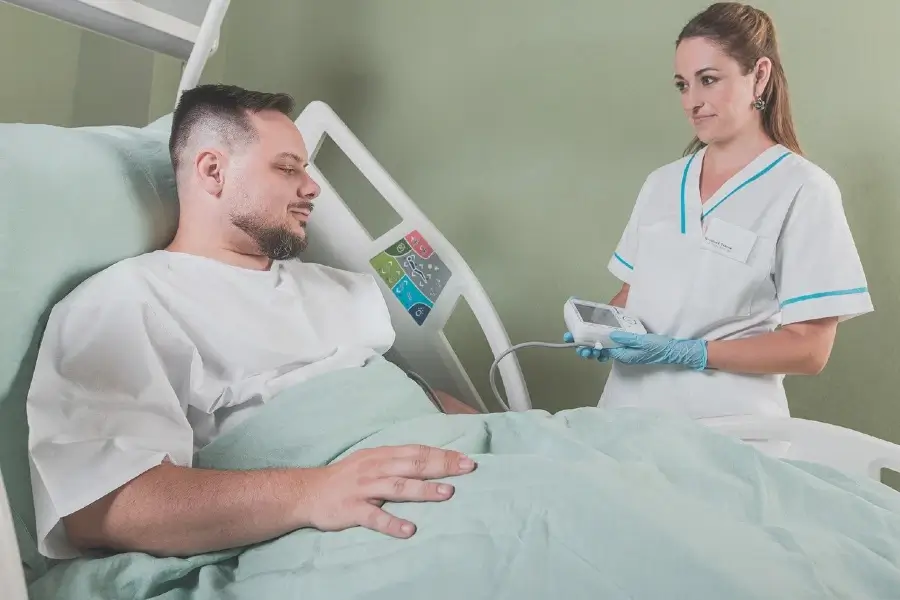An inflammatory fibroid polyp, or an IFP, is a benign tumor that can develop in the stomach wall. This type of tumor is highly uncommon. Although the gastric mucosa, the lining of the stomach, is the most prevalent location for its presence, it can also be found in the esophagus, the small intestine, the large intestine, and even the gallbladder.
All of the information that you need to know about IFP of the stomach is broken down as follows:
Indications:
IFPs of the stomach typically do not produce any symptoms, and they are usually discovered by accident during an endoscopy performed for another purpose but for no other reason. That being said, if the polyp grows to a sufficient size, it has the potential to cause some of the following symptoms:
Pain in the abdominal region
Nausea
Throwing up
Rare instances of bleeding
Rarely, the sensation of a mass in the abdominal region
Obstruction of the stomach outflow, a rare occurrence
The diagnosis is:
In most cases, the diagnosis of IFPs is made by a combination of the following:
Endoscopic examination: An endoscopic examination, such as an upper endoscopy or a gastroscopy, enables the physician to examine the stomach’s interior and possibly obtain a biopsy (a tissue sample) for further study under a microscope.
A microscopic analysis of the tissue obtained through the biopsy procedure is essential to confirm the diagnosis and differentiate IFP from other forms of tumors.
Management of:
The treatment indicated for intraepithelial polyps of the stomach is contingent upon the size and location of the polyp, in addition to the existence or absence of any symptoms. Listed below are the primary choices:
Endoscopic removal: Endoscopic removal is frequently the method of choice for removing smaller polyps because it is minimally invasive and may improve patient outcomes.
An individual specializing in gastroenterology or another healthcare provider normally performs this treatment.
An individual specializing in gastroenterology or another healthcare provider normally performs this treatment.
- First, the healthcare professional will put a thin, flexible tube called an endoscope into the patient’s mouth or nose. This is the first step in the process of endoscopic polyp removal.
- The tip of the endoscope is equipped with a miniature camera, which enables the healthcare provider to see the polyp and the areas surrounding it within the digestive tract.
- After the polyp is discovered, the healthcare professional will use specialized tools and instruments inserted through the endoscope to grip, capture, and remove it.
- Small forceps, snares, and other cutting devices specifically developed for this function could be included in this equipment category.
- The entire process is carried out while the patient is under the influence of sedation or local anesthesia to ensure the patient’s comfort and reduce any discomfort they may experience.
This information can help the healthcare professional formulate an appropriate treatment plan and monitor the patient’s status going forward.
Following removal of the polyp, it is then transported to a laboratory for additional examination to ascertain its characteristics and discover any possible underlying disorders or risk factors there may be. This information can help the healthcare professional formulate an appropriate treatment plan and monitor the patient’s status going forward.
Endoscopic polyp removal is considered a safe and successful method for surgically removing smaller polyps. It eliminates the need for more intrusive procedures and enables the patient to recuperate from the surgery more quickly.
However, the healthcare professional will carefully assess the size, location, and other characteristics to determine whether this strategy is the most appropriate choice for each patient.
Surgery: In certain instances, particularly for larger polyps or those creating difficulties, it may be necessary to remove the polyp using surgical means. The precise circumstances will determine the type of surgical procedure that is performed.
IFPs are relatively harmless tumors.
The prognosis is:
IFPs are relatively harmless tumors; the prognosis is typically favorable when wholly removed. To monitor for recurrence, it may be suggested that you have regular follow-up endoscopies.
The purpose of this information is solely to provide general knowledge. It should not be used as a substitute for the advice of a qualified medical professional. It is essential to seek the diagnosis and treatment of an IFP of the stomach from a qualified medical practitioner if you have any worries about the possibility of having one.
